The BAR - Spring Summer 2022
The Spring Summer Edition of the BAR is only available here on the branch website.
MAISON DOUBLES UP
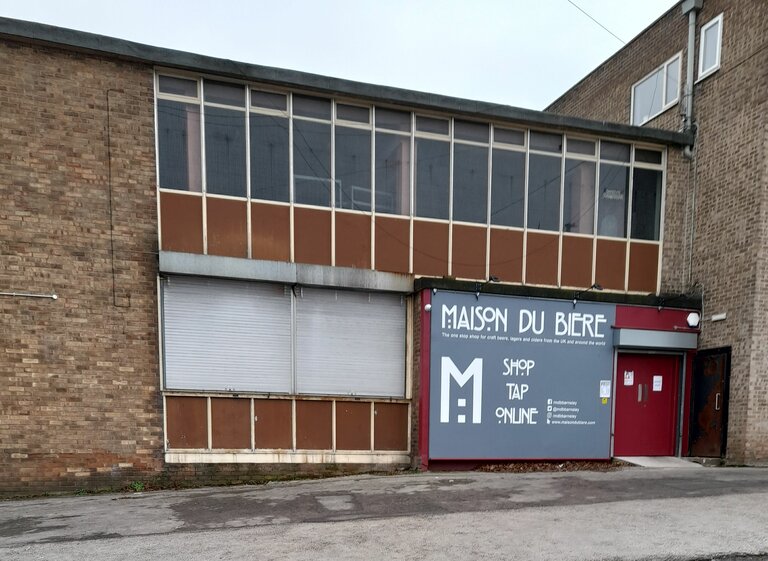
Nigel Mount opened the Maison du Biere at Elsecar Heritage Centre back in 2015. Initially, it was an off-licence, though far from any old offie, with a selection of beers, particularly, European ones, unrivalled in the area. A couple of years later, a tap room was added along with a superb selection of quality ales sold from keykegs.
Nigel had originally been inspired by seeing, on European tours, bars and cafes occupying former industrial buildings, and the Maison of course occupies the former Earl Fitzwilliam workshops (though at the time of writing it has temporarily moved to a nearby building whilst renovation works are carried out). He had, for some time, been looking for a place in Barnsley, where a quality beer scene was clearly developing. Then the former M C Mills ironmongers premises in Lower Castlereagh Street became available and fitted the bill perfectly. The new Maison opened last October.
The building itself is not a thing of beauty, unashamedly reflecting its industrial past, but once through the doors, things become very interesting. There’s a single L-shaped room with the beer shop at one end. Two walls feature artwork by Lewy (Lewis Ryan) which celebrates the building’s previous incarnation.(Lewy also designs many of Abbeydale’s pump-clips and labels). There’s a row of alcove-style bench seats and tables along two walls then a row of tables with stools constructed from empty key-kegs (as with the Elsecar Maison, Nigel has been keen to use lots of recycled material). The lack of windows may take some getting used to but the attractive light fittings provide plenty of illumination.
Behind the handsome bar counter, with its slatted wood front, are no less than 25 taps serving a variety of continental beers, British ales with an emphasis on Yorkshire and ciders. Nigel has particular links with Brass Castle, Abbeydale, Brew York and Disruption but pretty much anything can turn up (but don’t expect Doom Bar). As some drinkers still have reservations about keykeg-served beer, Nigel will shortly be installing some handpumps as well. Food is confined to local pork pies, crisps and nuts.
If the 25 taps aren’t enough, the shop offers over 500 bottled and canned beers, ciders and perries from all over the world. These can be bought to drink in as well as take away.
Outside is a large car park that Nigel hopes to utilise for events. See you at one of them!
Paul Ainsworth

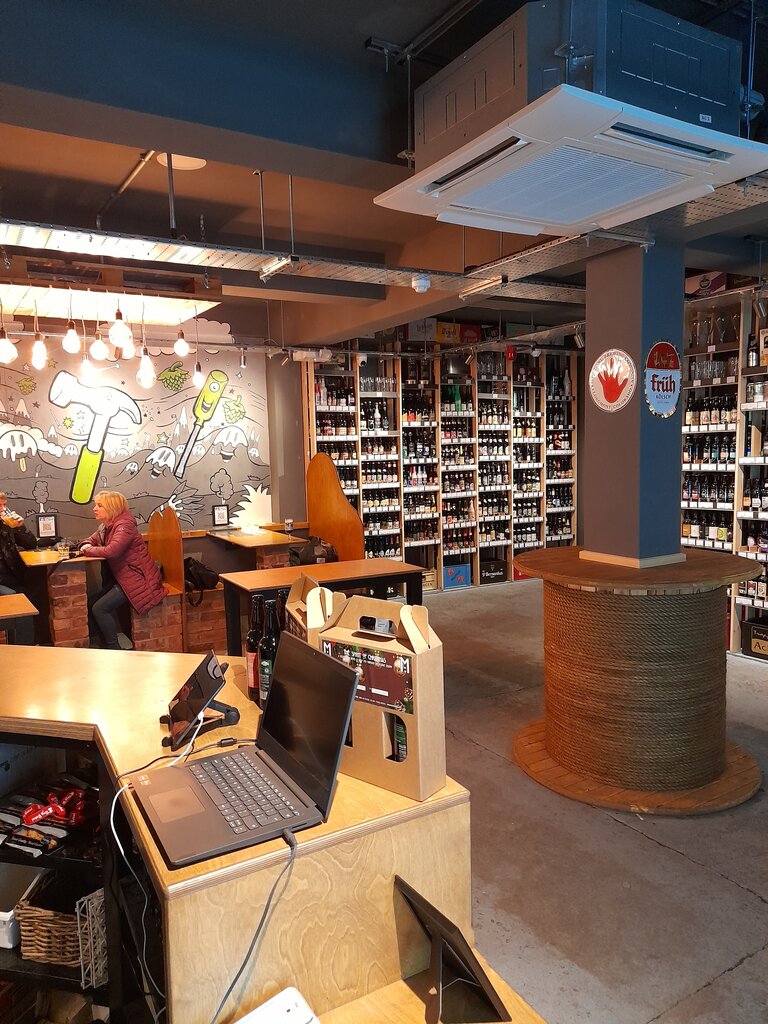

AVOIDABLE DEATH OF A BEAR
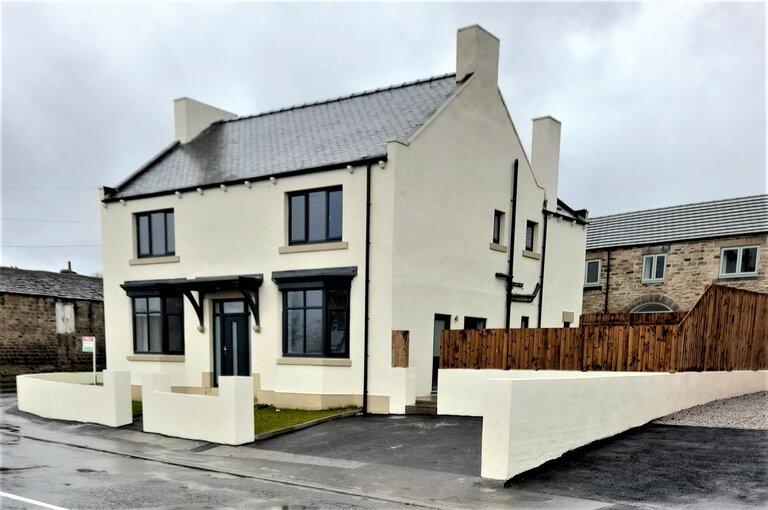
The only pub in Kexbrough, the White Bear, closed in 2019. For some years it had suffered from a lack of investment and a succession of inexperienced licensees, interspersed with periods of closure. Owners Admiral Taverns put the freehold on the market and it was bought by a property developer from York (but more of this later).
In August 2020, a planning application was submitted for ‘conversion of part of existing public house and outbuildings to 3 dwellings including some demolition works’. Barnsley CAMRA lodged a strong objection because we felt that, in the right hands, there was no reason why this could not be a viable pub. Barnsley Council refused the application on several grounds, one being that insufficient evidence had been provided to show that the use was no longer required and therefore the application offended the Local Plan policy on protecting community facilities like pubs.
In January 2021, the developers put in an exactly similar application and we again objected. To our astonishment, the application was approved! I wrote to the Planning Officer, a Mr Denman, requesting an explanation. It turned out that agents acting for the developer had provided a 10-page background document about the marketing of the pub. Bizarrely, this document hadn’t been made publicly available because, Mr Denman said, it contained ‘personal information’ (it didn’t). He then sent me a copy of the statement, which we would certainly have challenged had we seen it.
The report stated that ‘every attempt was made to market the public house as a growing (sic) concern over a long period of time, but this failed to secure any purchaser wishing to try and recover the business’. The suggestion that nobody was interested in buying the pub as a pub simply wasn’t true. Dave Lockwood, who owns several pubs in the area, including the Talbot, Mapplewell, had made strenuous efforts to purchase it. He said to me ‘Unfortunately, prior to completion another party had an offer accepted and we entered a contract race. I had contracts prepared and had transferred the deposits within 24 hours but sadly they managed to complete the transaction hours before I was able to.’
I asked Mr Denman whether Dave’s very keen interest in buying the pub would have impacted on the planning decision. I received a response to say that Mr Denman had left the Council and someone else would get back to me, which they did over two months later after a couple of chasers. Regarding Dave’s interest, the officer said ‘If we had received this information at the time we could have used it to further question the applicant about what interest there was in the property. However there may have been justifiable reasons why the sale did not go ahead….’ He considered that the loss of the community facility could be considered acceptable.
Needless to say, I wasn’t satisfied with this. In my reply, I asked three questions: - do you agree that the report by the agents contained misleading and, indeed, untruthful information? - had you known the true facts of the situation, might the outcome have been different? - if you do agree that the report was deceptive, do you intend to take any action?
The response that eventually arrived made no attempt to answer these questions, so I asked them again. All was silence so I submitted a formal complaint to the Council about the failure to respond.
The investigator did not (surprise, surprise) uphold my complaint because ‘it is not possible to say definitively whether or not the report by Nicholas & Nicholas (the agents) was misleading and untruthful (albeit I recognise that you present a relatively compelling case)’.They went on to say that ‘in my experience, no Local Planning Authority would be able to give a firm answer to the question of whether they would have refused the planning application in question had they been supplied with different information…...but I accept that the information you refer to may have reduced the likelihood of permission being granted’.
At this point, I was sharpening my quill ready to pursue the complaint with the Ombudsman but decided against it because the letter continued ‘...this complaint does suggest that our consideration of planning applications proposing the potential loss of public houses would benefit from Barnsley CAMRA being directly notified of such applications’. Henceforth, our Pub Protection Officer (currently me) will be consulted on all applications proposing change of use or demolition of pubs.
That’s certainly a good outcome and we’ve drawn a line under this sorry episode as a result. The tragedy remains, though, that in the hands of an excellent operator like Dave Lockwood, the White Bear could now have been a thriving establishment serving the residents of Kexbrough.
Paul Ainsworth
THE CURIOUS WORLD OF SAM SMITHS
Samuel Smiths of Tadcaster is Yorkshire’s oldest brewery, founded in 1758. It’s an unlimited family-owned company with Humphrey Smith the man currently at the helm.
The estate comprises around 200 pubs, many in Yorkshire but twenty or so in London and others scattered throughout the country.
Some good things can be said about the company. They have a proud record of refurbishing their pubs in traditional style, in many cases restoring a multi-roomed layout to a previously opened-out interior. The work carried out at the Princess Louise in Holborn, London, for instance, is quite amazing; an original series of drinking booths, separated by ornate glass and timber screens, but removed many years ago, was beautifully reconstructed in 2008, as were the gorgeous mosaic floors. All this work must have cost a fortune. The company has won several CAMRA Pub Design Awards.
Sam’s also brew pretty good beers. Their only real ale, the sweet, malty Old Brewery Bitter, isn’t to everyone’s taste buts it’s undeniably well made. The bottled beers are mostly excellent, with Nut Brown Ale being a particular favourite of mine. The keg stout is also a fine beer, as is the legendary strong ale, Yorkshire Stingo.
Sam’s were also renowned for the cheapness of their beer with pints at around £2, even in affluent parts of the country. However, the end of the first pandemic lockdown saw a price increase of £1 a pint across the board. Real ale is becoming increasingly hard to find as well – handpumps are ripped out if turnover falls below a certain level.
However, there’s another side to the company, much of which seems to derive from the eccentric and autocratic management style of Mr Humphrey. He can be held responsible for the numerous rules that apply to the pubs, their customers and licensees – no music, no televisions, no mobile phones, tablets or laptops and no swearing. Managers are required to serve ‘pints’ with heads sufficiently big that only 94% of an actual pint is delivered, the 6% representing a nice saving to the company – who claim that this practice has been cleared with Trading Standards. Any contravention of these rules represents a sacking offence. Humphrey reportedly visits his pubs incognito and should he hear a customer swearing, he’ll sack the manager on the spot. In 2020, he reportedly dismissed the manager of a Sheffield pub for not having his favourite pudding on sale! He also closed down a new pub in Droitwich, which had only been open seven weeks, because he heard a customer swearing.

All Sam’s pubs are managed and the recruitment scheme is low-cost to say the least – vacancies are advertised by scruffy handwritten posters in the pub window and on the Gumtree website. A recent visit to the latter revealed that no less than 109 vacancies – half the pub estate – were being advertised, with the pubs concerned closed in the meantime. This includes two pubs in our area – the Engineers Arms, Higham and the Edmunds Arms, Worsbrough Village. The latter, formerly a Good Beer Guide regular, has been shut for over a year and locals are getting understandably restive. They also say that the historic building is starting to look dilapidated and the garden has become overgrown. A brewery spokesman said ‘If we had managers willing to take on the pub, then the pub would be open. We’re not planning on selling the pub and will continue to wait for someone to take the management post’. Given Sam’s record on staff relations (there are apparently a considerable number of employment tribunal cases in progress) it’s hardly surprising that applicants aren’t beating a path to the door.
So, how can Sam’s afford to keep half of their estate closed and forego the revenue involved? Mainly this is because the family has huge property holdings in the Tadcaster area and elsewhere which bring in plenty of dosh.
With so many pubs closed, there’s obviously a worry that some will never reopen but be sold for another use. However, we understand that the business was set up in such a way that the family can only buy, not sell, the pubs, with each generation being custodian for the next.
Humphrey is 73 and can’t go on for ever. The hope must be that whoever next takes the reins has a more enlightened attitude to both pub and person management. For now, if you find a Sam’s pub open, best take your chance of a visit while you can.
Hannah at the Hob
The not so humble lemon. The love of all things citrus.
The ubiquitous lemon. Lemons and limes sit in my fridge until stale but I had forgotten their glorious history. We enjoy citrus flavours in beer, we have lemon & honey cough drops, a slice in our gin and lemon drizzle cake for a treat. It’s the season to make Seville Orange marmalade too. I use lemon to clean the microwave and as a seasoning to reduce the amount of unhealthy salt. Supermarkets are promoting dishes with red oranges which I know as blood oranges. Is this to do with vegan 2022?
Gin producers, such as Waterton’s (Nailmaker) use thinly peeled citrus skin in their distillation process. A twist of citrus peel rubbed around the rim of a glass of gin or Martini adds to the flavour and these oil droplets are less acidic than the flesh.
Citrus flavours in beer are popular but the taste comes from the blend of hops selected by the brewer rather than lemons. Citra hops give notes of lime, mango and floral. Increasingly, Citra hops are being used by brewers of single-hop beers because their intense flavour balances with the smooth taste needed in American Pale Ales and IPAs. They may be listed on the bottle too. (definitely my favourite hop – ed.)
Citrus family. There are many citrus varieties but all originate from three strains, the mandarin from China, pomelo from Malaysia and citron from the slopes of the Himalayas. These three ancestral trees are very unusual plants because they cross pollinate between different species producing spontaneous and unstable varieties, a problem for commercial cultivation. There are 4,000 varieties of orange for example.
Sicilian lemons and the Mafia. The British Navy, in the mid C19, had a 50 year contract for Sicilian lemons. Lemons travel better than oranges and in 1860 Sicilian citrus crops earned more money than any other crop in Europe. A lemon tree produces 600 - 1000 lemons per year. But lemon cultivation is slow. The land needs to be cleared of stones, wells dug, irrigation channels built, along with 3m stone walls to provide protection from wind and thieves plus access roads and water pumps. Security guards were deployed at the farms and at the port. Lemon growing is a big investment with slow returns. The first crop is ready at three years and the peak crop at eight years. Farmers needed the backing of rich landowners, merchants and bankers, hence protection rackets evolved.
The oceans were the international trade routes and sailors died from scurvy until the dietary addition of citrus fruit. The lemons were often preserved in seawater, not dissimilar to the preserved lemons used in Arabic cooking then and now.
Lemon Houses. Lake Garda. At 46N, Lake Garda is almost too far north for lemon cultivation but a micro-climate arises from the volume of water in the lake and the shelter provided by the Alps. Summer irrigation flows from high altitude water into storage tanks. Lemon farming on the west shore was started in C13 by Franciscan friars. Later, lemon houses or enormous greenhouse were built to protect the crop. D H Lawrence, living at Lake Garda, wrote in the winter of 1912-13 that these were the dying days of lemon cultivation - it was too labour intensive and there were better jobs in tourism. Also, railways had opened up access to the fruit from southern Italy. Originally boats were used for transporting lemons because mule transport resulted in bruised fruit. These Garda lemons were more acidic and more popular than the southern crops. They sold for two or three times the price and reached the customer in a better condition because of the reduced travel time. The markets were in Germany, Austria, Hungary, Poland and Russia but the road was not built until 1931. The lake is also halfway between the commercial cities of Venice and Milan.
The massive lemon houses provided protection from the cold winter winds. They were built with metre thick walls, huge pillars, wide terraces and roofs. Each lemon tree had a 20m square patch of ground between two sets roof pillars. Lemon trees grow to a height of 9m but with shallow horizontal roots, hence the need for scaffolding made from chestnut poles. On warm days the farmer would remove the wooden or glazed panels to allow the sun to nurture the plants. Cultivation and harvesting was hard labour-intensive work with each fruit being hand wrapped and placed in wooden crates.
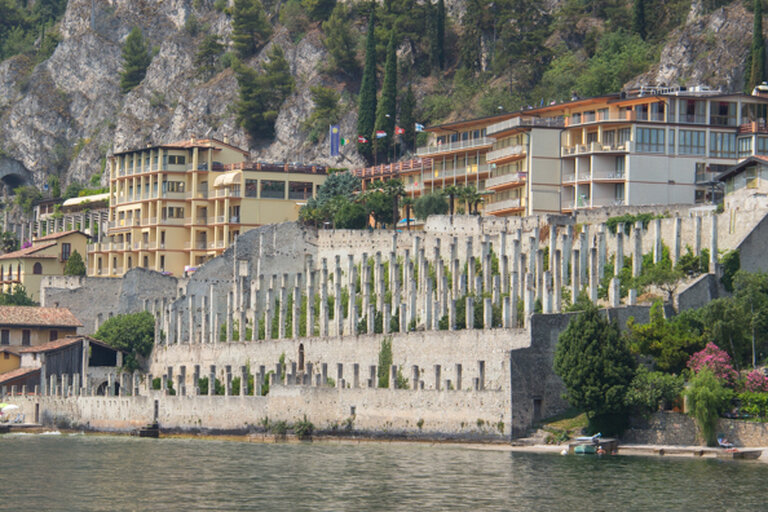
Remains of a Lemon House on Lake Garda
Lemon sauce with tagliatelle. (Serves 2)
150g tagliatelle
Juice & zest of 1 small lemon
4tbs double cream
Black pepper & grated parmesan to serve.
( the addition of a few cooked frozen peas works well )
Parsley to garnish.
Combine the lemon with the cream and season to taste. Pour over and stir into the freshly cooked, hot and drained pasta. Serve immediately with black pepper and grated parmesan. Garnish with parsley.
The pasta absorbs the cream so an extra splash made be needed if it is too sticky.
Enjoy with a citrus style beer such as Wold Top Gold or Acorn Gold.
Hannah Lucas
SPIRAL CITY COMES TO TOWN
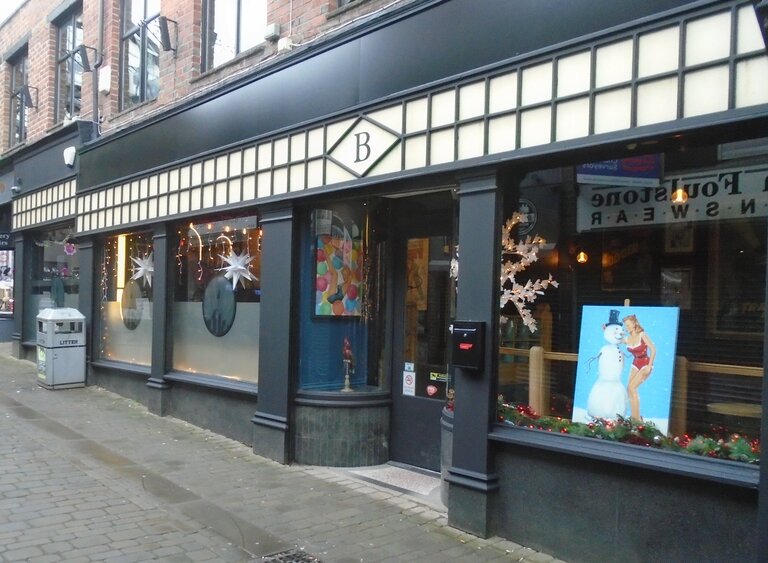
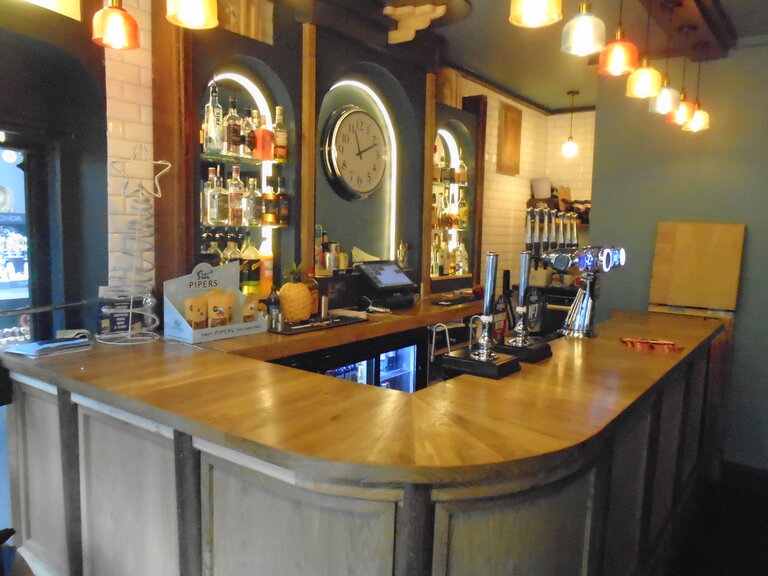
The number of new and interesting local outlets for quality beer continues to increase despite all the challenges that the pandemic has thrown in the way of the licensed trade.
Spiral City opened in Barnsley’s Victorian Arcade before Christmas, opposite the now well-established Jolly Tap and the more recent arrival, Peaky Blinders. Owners are renowned comic book artist Dean Ormston and artist Fiona Stephenson. With Jeff Lemure, Dave is the creator of the Black Hammer comic series, in which Spiral City features.
First thing to say about the place is that, as you’d expect with artists at the helm, it’s superbly designed in a broadly art-deco style and featuring lots of comic and pin-up art (Fiona specialises in figure studies based around American pin-up art from the 1940s/50s), along with some vintage film posters. The ground floor is split level with the counter in the upper portion; it has large windows onto the Arcade, a dark-tiled floor and a colour scheme mostly in shades of teal. Upstairs are two rooms with pine floors, light teal walls and a variety of bench seating and free-standing tables. One room is dominated by a magnificent Rock-Ola jukebox. Fiona has a small studio on this floor.
The bar is completely free of tie so anything can turn up on the two handpumps and keg taps, though local beers have happily been in the majority so far. The seven keg taps will generally offer two dark beers, two light, a lambic, a cider and Freedom lager. You can also choose from lots of interesting bottles and cans, including excellent bottled beers from Sam Smiths. The bar is managed by Matt Nippers, previously of the Jolly Tap across the way.
Finally, the other occupant of the building must be mentioned. The Vinyl Underground record shop has moved here from Regent Street and so this joins the increasing number of places in the country where the same door leads you to the twin joys of buying quality beer and great music (and Dave is hoping to put on occasional live music upstairs as well)
Paul Ainsworth
BARNSLEY CHOMPS
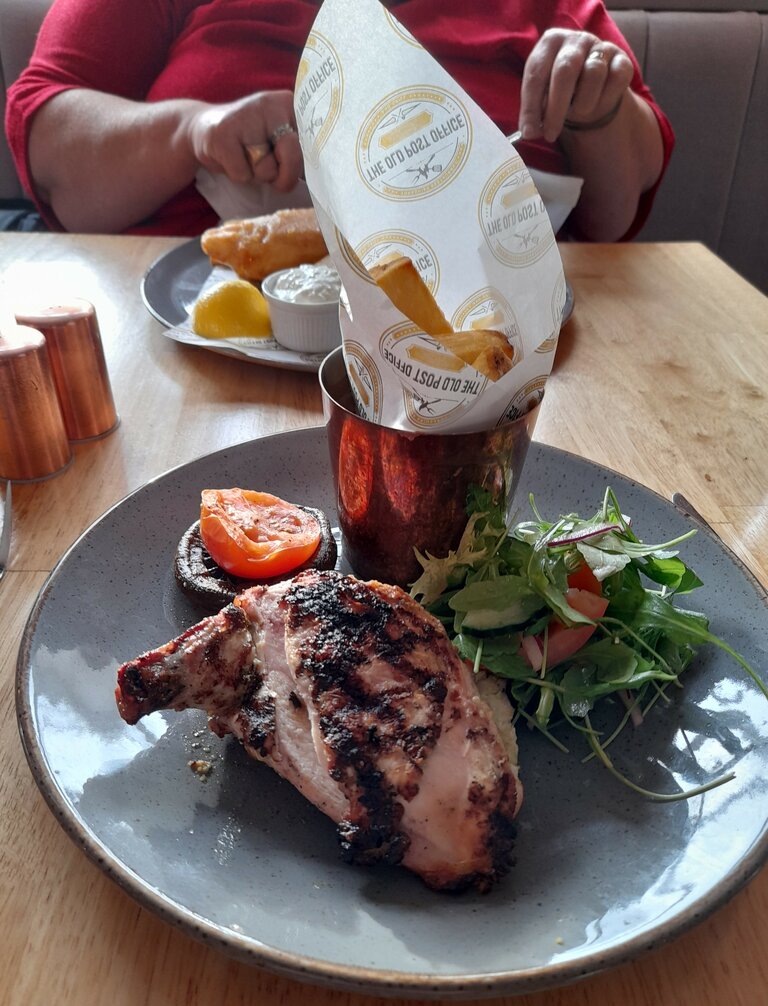

As Jane and I had vegetated somewhat over the long Christmas weekend, a sortie into the outside world was called for, along with a change from my cooking, so on the Wednesday of Twixtmas we headed to the Old Post Office, Haigh for a spot of lunch. This was a first visit since it changed hands in October 2020 and we were keen to see if it lived up to the good reports we’d seen. The OPO occupies a sturdy stone building in an isolated position not far from junction 38 of the M1 and why there was ever a post office in such a location is a mystery – anybody know? The entrance steps take you into a comfortable waiting/sitting area where ‘just drinkers’ are welcome provided all the seats aren’t already occupied. Then it’s up more steps to the bar counter and L-shaped restaurant – this is very much a food-dominated operation. The new owners have given the place a thorough makeover with a tasteful grey and green colour scheme and new carpets and seat coverings. Downstairs is the Garden Room, with its own bar, used at busy times and which has patio doors to the garden with its children’s play area and (currently) a large tent offering further seating.
An initial joy to behold was an occupied hand-pump, as there had been no real ale available for quite a while under the previous regime. This was dispensing Bradfield Belgian Blue and my pint was in excellent condition. I’ve always found this a perfectly decent, if undemanding, beer, a sort of beefed-up mild (4.9%) with subtle berry flavours. It is, of course, staggeringly popular in these parts when it makes its winter appearance despite dark beers being generally unfashionable. The head supposedly has a blue tint but it looks pink to me and the body of the beer is distinctly red. A Belgian Blue, incidentally, is a breed of cow, as depicted on the pump-clip. There’s also a selection of bottled beers from Nailmaker.
On to the grub. The OPO built its reputation as a steakhouse and a range of steaks and grilled offerings (including Barnsley Chops) remains available. The menu does, though, also cater for those who aren’t serious carnivores with ten starters and ten non-steaky main dishes to choose from. For starters, I went for Roasted Belly Pork (£7) while Jane selected Lobster Mac(aroni) and Cheese (£8). I love belly pork but it does need to be done properly and this was a star example – two big chunks of juicy meat, with delicious crackling, accompanied by black pudding and a celeriac and orange remoulade – just superb. Jane was equally delighted with her dish which featured a generous amount of lobster whose subtle flavour wasn’t overpowered by the cheeses and smoked pancetta – the garlic and parsley crumble topping provided a welcome contrast of textures. Both dishes were beautifully presented.
For the main course, I plumped for Lemon & Herb Chargrilled Chicken Breast (£13) which came accompanied by splendid home-made chunky chips, a roasted tomato and big mushroom and a salad. Again, the meat was perfectly cooked, truly succulent and the whole ensemble worked a treat. The lemon/herb flavours had perhaps got a little lost in the grilling but any criticism would be very harsh. Jane had no qualms whatsoever concerning her Fish & Chips (£13) which she pronounced excellent (and this girl is a true F&C connoisseur). The generous chunk of cod was moistly tasty, the batter light but crispy, the peas mushy and the chips chunky. No room for puddings but we could have chosen from four options, all £6.
For a midweek lunch-time at a quiet time of year, the place was busy and you can understand why. Definitely a treat to repeat. Paul Ainsworth
FOUNTAIN TURNED BACK ON
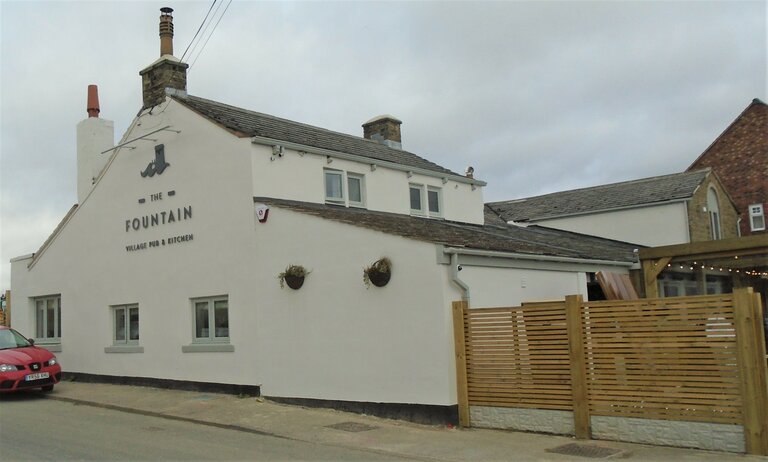
When the Fountain at Ingbirchworth closed in 2017, its new owners, developers Conroy Brook, applied to demolish it and redevelop the whole site with housing. After a local outcry, the Council threw out the proposals and the developers went back to the drawing board. Happily, their new plans, whilst still building nine family homes on the site, retained and refurbished the Fountain itself.
The pub fully reopened last October and Brook Leisure Group who run it are to be congratulated on a fine job of restoring the 1849-constructed building. The essentially open plan layout is split into several distinct spaces; the two areas to the right of the entrance are for drinkers, the rest being devoted to food service. Decor is smart/contemporary with pastel shades predominant but the fine old beams regularly poke through. A large, chunky counter with tiled frontage runs along most of the back wall. At the front, a sheltered patio seating area is also home to a kiosk for easy service and take-away offerings.
Three real ales are on handpump – Bradfield Farmers Blonde, Tim Taylor Landlord and a changing guest (Wells Bombardier on my visit). As with most country pubs nowadays, food is very important here and there are separate breakfast, Sunday lunch and main menus. The last features a choice of nine starters, six options from the grill/rotisserie and 13 other dishes – classics, fish, vegan and salads. There’s also a snack menu. The pub is closed Monday and on Tuesday daytime but open all day the rest of the week. A quiz night takes place on Tuesdays. It’s always great to see a pub ‘return from the grave’ and this one is especially welcome.
PUB COMPANIES WHO THEY ARE AND WHAT THEY DO
First part was printed in The BAR Autumn/Winter 2021/2022. This is parts 1 and 2.
CAMRA reckons that many drinkers would find it helpful to have more information about the companies that control many of our pubs. This is the first in a series of articles that will provide the facts on pub company practices and operations, explaining in particular how their business models work and what this means for both licensees and, ultimately, us as customers. The aim is to let the facts speak for themselves so that you can make up your own minds about the positive or negative effects of these practices on our pubs and the folk who run them.
1. A POTTED HISTORY OF THE PUBCO
Fifty years ago, when CAMRA was formed, the pub landscape looked very different. For a start, there were many more of them – some 75000 against around 47500 now. The majority of pubs (52000 or so) were owned by breweries. The 89 small and regional breweries had 13800 of them and the rest were in the hands of the ‘Big Six’ – Bass Charrington, Allied, Whitbread, Scottish & Newcastle, Watney/Grand Metropolitan and Courage/Imperial.
Most of the other 23000 pubs were free houses (in name anyway – many tied their beer supplies to a big brewer in return for loans and discounts). Companies that just owned pubs were few and far between – the likes of Sir John Fitzgerald in the north-east and Heavitree in the south west (though they tied themselves to Bass).
Just about every pub-owning brewery rigorously imposed a supply tie on its own products. As late as the mid-1980s, I remember a Greene King Director recoiling in horror at my suggestion that they allow a few guest beers in their pubs. As a result, new breweries found outlets hard to come by and we customers were hardly spoilt for choice, as a glance at a Good Beer Guide of that era will reveal.
Then, in 1989, along came the Beer Orders. The story of this epochal legislation (for better or worse) is superbly told in Laura Hadland’s recent Fifty Years of CAMRA book but, in essence, the government acknowledged the stranglehold on the industry exercised by the Big Six and, among other things, capped their pub ownership at 2000.
By now, because of closures and sell-offs, the Big Six owned fewer pubs between them but the Orders still meant around 11000 pubs coming onto the market. We, of course, dreamed of a new golden age of multi-handpumped free houses galore, but the reality was sadly different. Companies were quickly established, usually with close links to the Big Six, to hoover up these pubs in big batches then negotiate supply deals, invariably with the company who previously owned the place. Enterprise Inns, for instance, started off with the purchase of 368 pubs from Bass, and that’s where they bought the beer from.
In the years that followed, wheeling and dealing saw companies variously grow, collapse, merge, acquire, dispose – it was very difficult to keep up with who owned what. Some companies concentrated on managed pubs, some on tenancies, a few on a mixed model. Behemoths emerged – by 2004, Punch Taverns and Enterprise each owned more than 8000 pubs, though both had accumulated so much debt that they ran into trouble come the financial crash and subsequently retrenched. We’ll have a closer look at the current pub company scene in the next article.
A brief history of Punch Taverns illustrates the volatility surrounding pubcos from the 1990s onwards. Punch formed in 1997, purchasing a tranche of pubs from Bass. Two years later, they bought Inn Business (mostly former Whitbread pubs) and then the rump of the Allied estate. The managed pubs were spun off into a separate division called Spirit. In 2003, they acquired their 3100-strong rival Pubmaster plus a couple of smaller companies. Next, Scottish & Newcastle’s managed pubs were snapped up and added to Spirit. By 2011 the impact of the crash was being felt, calling for a ‘strategic review’. Spirit was demerged and, in 2015, sold to Greene King. Come 2016, a takeover bid totalling £403m (plus the taking on of a billion pounds of debt) was accepted; 1900 pubs went to Heineken with the remaining 1300 residing with Patron Capital, though the Punch brand has been retained.
What, then, of the breweries that still owned pubs? The Beer Orders were actually revoked in 2003 so brewers are no longer prevented from having over 2000 pubs. However, brewers have tended to move in different directions. In some cases (e.g. Greene King and Marstons) this extends only so far as having separate management structures for their brewing and pub operations. Others, though (Fullers, Youngs, Charles Wells), have sold their breweries to become just pub companies. Thwaites sold their main brands and downscaled to a mini-brewery.
In the meantime, the treatment of their tenants by many of the Pubcos had become a major issue and, after years of campaigning, the Government was persuaded, in 2014, to announce a statutory Pubs Code aimed at regulating their practices and ensuring fair treatment for tenants. We’ll return to the Code in a future article. In this context, though, it needs mentioning that the currently accepted definition of a pub company embraces breweries that own pubs.
Final comments. Pub companies are here to stay and some of them (mostly smaller ones) are very good, treating their licensees well and clearly regarding their pubs as more than just property assets. It would, though, be difficult to argue that the ways in which some companies operate raise many issues around their custodianship of what aren’t just piles of bricks-and-mortar but, in most cases, precious and valued community assets. We’ll examine those issues in due course.
2. THE CURRENT PUB COMPANY SCENE
A pub company is simply a company that owns pubs and there are literally hundreds of them, many with only a handful or even just one pub. We’ll concentrate here, though, on the bigger companies who, between them, own over half the country’s pubs.
Stonegate
Founded in 2010 with the purchase of 333 pubs from Mitchells & Butlers, Stonegate grew quite slowly over the next ten years, making a series of acquisitions including brands like Slug & Lettuce, Walkabout and Be At One, until its pub numbers totalled 765. All the pubs were managed houses. A seismic change came in 2020 when Ei Group was bought for £1.27bn, making Stonegate the largest pub company in the UK with 1,270 managed pubs and, as a result of the Ei purchase, 3,200 leased and tenanted businesses.
Ei itself had been founded, as Enterprise Inns, in 1991, initially with 333 pubs from Bass. The company built up its estate, gaining 2,200 pubs in batches by buying them from other companies or taking them over. In 2002, 1,864 pubs were bought from Whitbread and in 2004, 4,054 from Unique. By this time, it owned nearly 10,000 pubs and was in the FTSE 100 list of top companies. However, it was loaded with debt and the 2008 financial crash required a good deal of retrenchment. Ei also started building up its managed estate, including pubs on retail agreements under the Craft Union brand (we’ll look at this operating model in the next article). By the time of the sale, it was down to fewer than 4,000 pubs.
Punch Taverns
The first article included a brief history of Punch to illustrate the volatility around pubco development. In summary, it grew quickly to around 8,000 pubs, suffered under the crash, sold a lot of pubs including its managed division and was taken over in 2016. 1,900 pubs went to Heineken and 1,300 to Patron Capital, who retain the Punch brand. At takeover time, all pubs were leased or tenanted but it’s also now pushing retail agreements (which it calls Management Partnerships). Some pubs were sold but in June 2021 it announced the purchase of Youngs’ tenanted division, bringing the current total to 1,282.
Admiral Taverns
Admiral was founded in 2003 by two families and grew quickly to 2,300 pubs by 2007. Many of these were ‘bottom end’ houses disposed of by other pub companies. The financial crash had the usual consequences for over-extended businesses and numbers were down to 1,700 by 2011 and continued to fall. By 2017 it was in the hands of Cerberus Capital Management who sold up to a joint venture by Magners cider-makers C&C Group and estate investor Proprium Capital Partners, by which time there were 845 pubs. The acquisition trail was hit in 2019 with 137 pubs coming from Marstons and 150 from Heineken. The big one arrived in July 2021 when Admiral bought 674 Hawthorn pubs from property firm New River taking the estate to over 1,500.
Admiral’s pubs are all tenanted or leased and tend to be wet-led community operations. It has a relatively good reputation in the trade though there’s certainly no aversion to flogging off pubs as ‘development opportunities’.
Star Pubs & Bars
In 1995, Scottish & Newcastle, one of the original ‘Big Six’ breweries, bought another of them, Courage, making the combined group Britain’s biggest brewer. By 2011, the pub arm, then known as S&N Pub Co, had 1,500 tenanted pubs and 600 in management. Come 2008, Scottish Courage was gobbled up by international brewer Heineken and the pub business rebranded as Star Pubs & Bars. Many pubs were sold but then, in 2017, as previously mentioned, 1,900 were snapped up from Punch. Again there were disposals and the estate currently stands at 2,500.
Star vigorously promote their retail agreement scheme, Just Add Talent. In 2020, it was fined £2m for breaches of the Pubs Code (which we’ll cover in a later article)
Greene King
In 1995, Greene King was a long-established family brewer with 900 pubs, nearly all in East Anglia and the South-East. It then embarked on a ferocious acquisition trail, swallowing up many breweries (the likes of Morlands, Belhaven, Morrells and Hardy & Hanson) and other pub companies. GK itself is now owned by a billionaire Hong Kong property developer. It has some 3,100 pubs, restaurants and hotels, of which 1,200 are tenanted or leased. Its strategy seems to be to move in the managed direction and the ‘Pub Ready’ retail agreements are pushed hard. GK was once renowned for not letting other people’s beers in its pubs but now have a more enlightened attitude.
Marston’s
The company was known as Wolverhampton & Dudley until 2007 when it rebranded as Marston’s, one of the many breweries it had taken over in recent years. At that time, 2,500 pubs were owned but the total is now down to 1,400. The tenanted estate, in particular, has been reduced through sales such as 200 to New River in 2013 and 137 to Admiral in 2019. In late 2020, the company took on the running of 156 Brains pubs in Wales. Also that year, Marston’s merged its brewing operations with Carlsberg but this does not directly affect the pub business.
Mitchells and Butlers
Formed originally out of the old Bass estate, M&B have 1,650 pubs and restaurants. The multitudinous brands include Ember Inns, Toby Carveries, Nicholsons and All Bar One – as can be seen, the emphasis is on food. Pubs are mostly managed though around 50 are on a lease arrangement.
J D Wetherspoon
Since opening its first pub in 1979, ‘Spoons has expanded to 925 pubs and 50 hotels, all managed. Plans for 18 new pubs are in the pipeline,
Wellington
Owned by the billionaire Reuben Brothers, the company leases all its 850 pubs on a free of tie basis.
